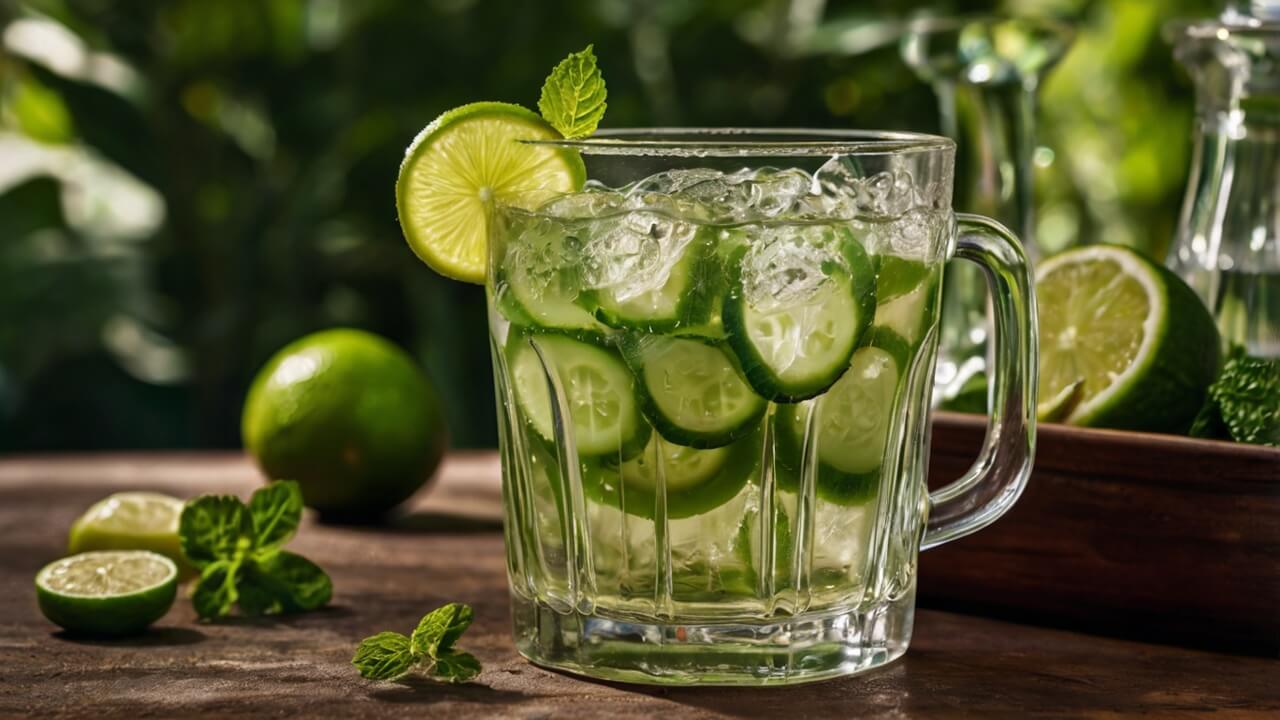Agua de Sapo, which translates to “Toad Water” in English, is a refreshing and unique beverage that hails from the vibrant culinary traditions of Costa Rica.
This distinctive drink is a beloved staple in the Afro-Caribbean region of Limón, where its tantalizing flavors and cultural significance have been cherished for generations.
At first glance, the name “Toad Water” might raise eyebrows, but fear not – this delightful concoction is entirely plant-based and free from any amphibian ingredients.
Instead, it derives its captivating taste from a harmonious blend of ginger, lime juice, and a special ingredient called “tapa de dulce,” which imparts a rich, caramelized sweetness.
The unique flavor profile of Agua de Sapo is a delightful fusion of zesty citrus, warm spice, and an intriguing depth of sweetness.
Each sip is a delightful dance on the palate, offering a refreshing respite from the tropical heat while transporting you to the vibrant streets of Costa Rica’s Caribbean coast.
Beyond its enticing flavors, Agua de Sapo holds a deep cultural significance in Costa Rican heritage, particularly among the Afro-Caribbean communities of Limón.
This beloved beverage is a testament to the rich culinary traditions that have been passed down through generations, intertwining the diverse influences of African, Indigenous, and Spanish cultures into a harmonious and delectable fusion.
Origins and History
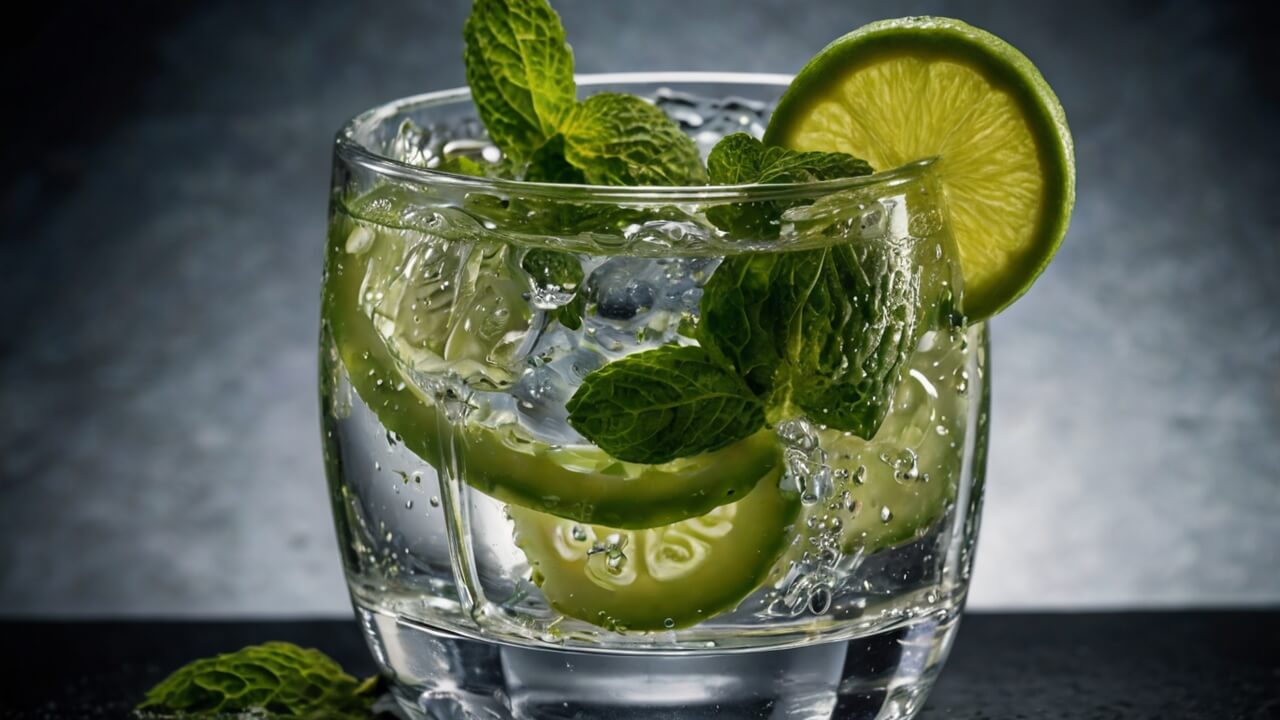
Agua de Sapo, which translates to “Toad’s Water” in English, is a refreshing and flavorful beverage deeply rooted in the vibrant Afro-Caribbean culture of Costa Rica’s Limón province. Its origins can be traced back to the late 19th century when Jamaican and other Caribbean immigrants arrived in the region to work on the construction of the railroad and banana plantations.
These pioneering communities brought with them a rich culinary heritage, including the tradition of brewing homemade ginger beer. Agua de Sapo evolved as a unique Costa Rican adaptation of this Caribbean staple, blending the zesty kick of ginger with the tangy sweetness of tapa de dulce, a traditional unrefined brown sugar.
In the coastal towns of Limón, Agua de Sapo became an integral part of daily life, quenching thirst and providing a burst of invigorating flavor. Its popularity quickly spread throughout the province, becoming a beloved beverage that transcended cultural boundaries and united the diverse communities of the region.
Over time, Agua de Sapo has become an indelible part of Costa Rican identity, particularly in the Afro-Caribbean enclaves of Limón. Its vibrant hue and distinctive taste have come to symbolize the rich heritage, resilience, and creativity of the Afro-Costa Rican people, who have played a vital role in shaping the country’s cultural tapestry.
Key Ingredients
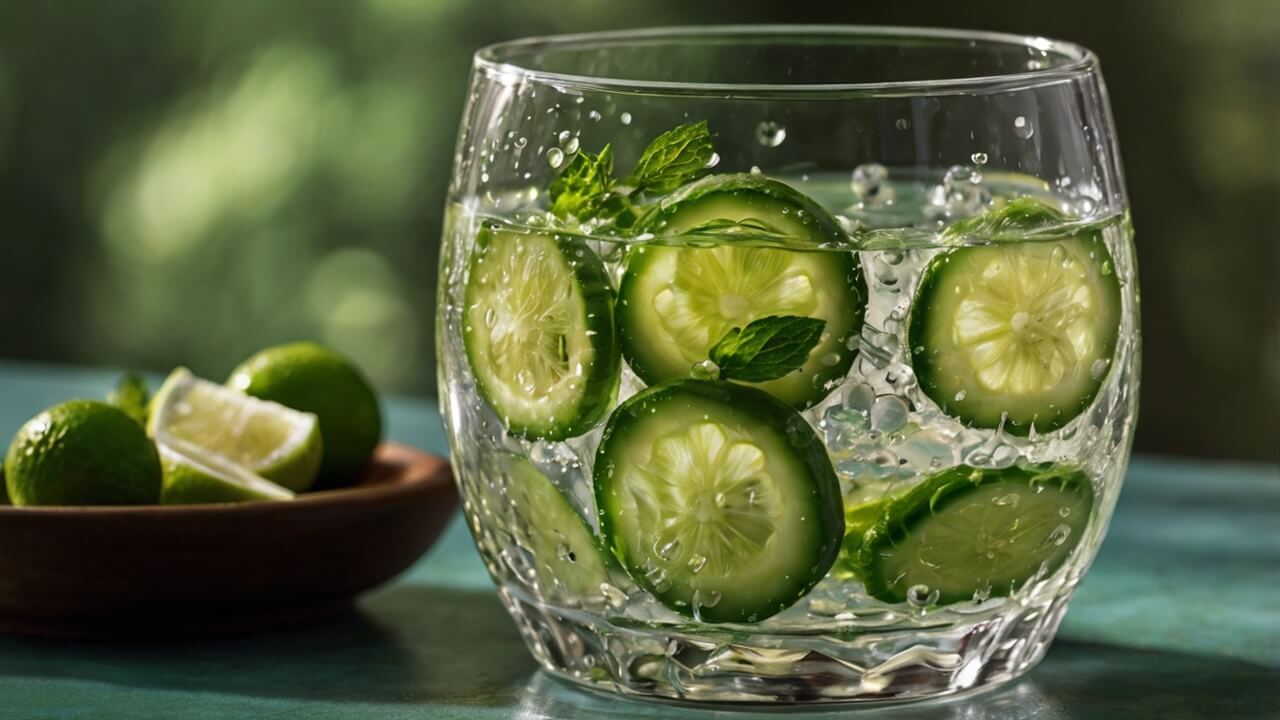
Agua de Sapo is a unique blend of flavors, combining the tartness of lime with the warmth of ginger and the sweetness of tapa de dulce. Here are the key ingredients you’ll need to create this refreshing Costa Rican beverage:
- Tapa de Dulce: This is a traditional Costa Rican candy made from solidified cane sugar juice. It provides the distinct sweetness and caramel notes to Agua de Sapo. If you can’t find tapa de dulce, you can substitute it with piloncillo (unrefined cane sugar) or dark brown sugar.
- Ginger: Fresh ginger root is essential for the spicy kick and warmth in Agua de Sapo. Grate or finely chop the ginger to release its flavors.
- Lime Juice: The tartness and citrusy notes come from freshly squeezed lime juice. Use key limes or Persian limes for the best flavor.
- Water: You’ll need water to dilute the concentrated flavors and create the beverage.
- Sugar (optional): Depending on your taste preferences, you may want to add a bit of white sugar to balance the tartness and spiciness.
Other optional ingredients include:
- Cinnamon Stick: Adding a cinnamon stick during the simmering process can impart a subtle warmth and aroma.
- Cloves: A few whole cloves can provide a hint of spice and complexity.
- Rum (for adults): For an adult version, you can add a splash of dark rum to the finished Agua de Sapo.
With these simple ingredients, you can recreate the authentic flavors of this beloved Costa Rican drink in your own kitchen.
Step-by-Step Recipe

Agua de Sapo is surprisingly simple to make at home with just a few key ingredients. Here’s a detailed guide to preparing this refreshing Costa Rican beverage:
Ingredients:
- 1 cup tapa de dulce (brown sugar cane juice)
- 1⁄2 cup fresh lime juice (about 4-5 limes)
- 1 inch fresh ginger, peeled and grated
- 6 cups water
- Ice cubes for serving
Instructions:
- Make the Ginger-Lime Mixture: In a small bowl, combine the grated ginger and fresh lime juice. Use a muddler or the back of a spoon to mash the ginger and lime together, releasing the flavors and oils.
- Combine Ingredients: In a large pitcher, combine the tapa de dulce, ginger-lime mixture, and water. Stir well to dissolve the tapa de dulce and incorporate all the flavors.
- Chill and Serve: Refrigerate the Agua de Sapo for at least 2 hours to allow the flavors to meld and the beverage to chill thoroughly. When ready to serve, fill glasses with ice cubes and pour the Agua de Sapo over the ice.
Tips for Best Results:
- Use Fresh Ingredients: The quality of your Agua de Sapo will depend heavily on the freshness of the limes, ginger, and tapa de dulce. Opt for ripe, juicy limes and fresh ginger for maximum flavor.
- Adjust Sweetness: The sweetness level can vary depending on the brand and quality of tapa de dulce used. Taste the mixture and adjust with more tapa de dulce or water to suit your preference.
- Let it Steep: Allowing the Agua de Sapo to steep in the refrigerator for a few hours before serving will enhance the flavors and ensure they blend seamlessly.
- Garnish with Lime: For an extra pop of freshness, garnish each glass with a thin slice of lime or a lime wedge.
Recommended Equipment:
- Large pitcher or container for mixing and storing the Agua de Sapo
- Muddler or the back of a spoon for mashing the ginger and lime
- Citrus juicer or reamer for extracting fresh lime juice
- Fine grater or microplane for grating the ginger
With these simple steps and a few key ingredients, you can easily recreate the authentic taste of Agua de Sapo in your own kitchen, transporting you to the vibrant flavors of Costa Rica.
Variations and Substitutions
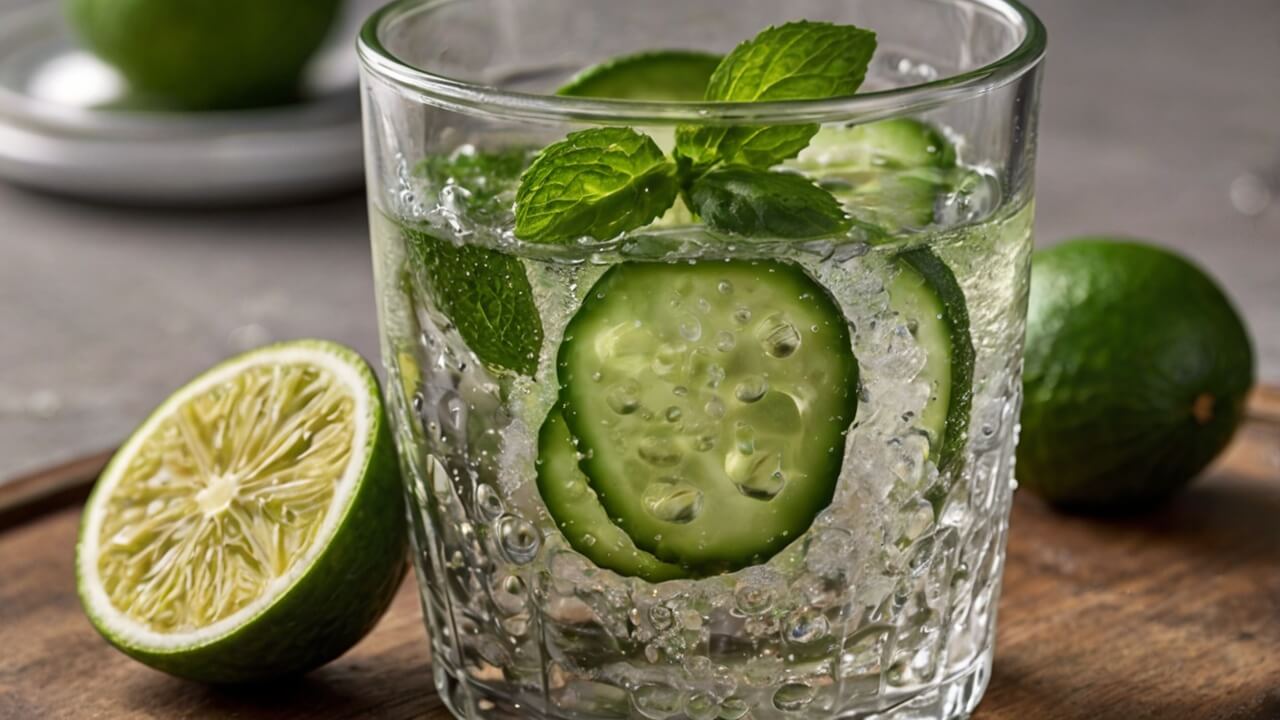
While the traditional Agua de Sapo recipe captures the essence of Costa Rican flavors, there’s room for creativity and personalization. Depending on your taste preferences or dietary restrictions, you can experiment with various substitutions or additions to customize the beverage to your liking.
Ingredient Substitutions:
- Sugar: If you prefer a less sweet drink, you can reduce the amount of sugar or substitute it with a natural sweetener like honey or maple syrup.
- Ginger: Fresh ginger root can be replaced with ground ginger powder, although the flavor may be slightly milder.
- Lime Juice: Lemon juice or a combination of citrus juices like orange and grapefruit can be used instead of lime juice for a different citrus punch.
- Tapa de Dulce: If you can’t find this unique Costa Rican ingredient, you can substitute it with brown sugar or molasses to achieve a similar depth of flavor.
Flavor Variations:
- Spiced Agua de Sapo: Add a cinnamon stick or a pinch of ground cinnamon to the mixture for a warm, spiced twist.
- Rum-Infused Agua de Sapo: For an adult version, stir in a shot of dark or spiced rum after chilling the beverage for a boozy kick.
- Fruity Agua de Sapo: Muddle fresh fruits like pineapple, mango, or strawberries into the drink for a fruity twist.
- Herbal Agua de Sapo: Infuse the beverage with fresh herbs like mint, basil, or lemongrass for a refreshing, aromatic variation.
Remember, these substitutions and variations are merely suggestions. Feel free to experiment and find the perfect combination that suits your taste buds. The beauty of Agua de Sapo lies in its versatility, allowing you to create a unique and personalized refreshment.
Serving Suggestions

Agua de Sapo is a refreshing and versatile beverage that can be enjoyed in various ways. To savor its unique flavor and experience the true essence of Costa Rican culture, consider the following serving suggestions:
Chilled and Garnished
For the ultimate refreshing experience, serve Agua de Sapo chilled over ice. Garnish with a lime wedge or a sprig of fresh mint for an extra burst of citrusy aroma and visual appeal. You can also add a cinnamon stick or a slice of ginger for an added hint of warmth and spice.
Pairing with Traditional Costa Rican Dishes
Agua de Sapo pairs exceptionally well with many traditional Costa Rican dishes. Its tangy and slightly sweet flavor complements the richness of dishes like gallo pinto (a mix of rice, beans, and seasonings), casado (a traditional meal with rice, black beans, plantains, and meat), or patacones (twice-fried green plantain patties). The beverage helps balance the flavors and provides a refreshing contrast to the heartier fare.
Serving at Gatherings and Celebrations
Agua de Sapo is a staple at Costa Rican gatherings and celebrations. Prepare a large batch and serve it in a pitcher or dispenser, allowing guests to help themselves to this flavorful and refreshing drink. It’s a perfect accompaniment to lively conversations and festive atmospheres, capturing the vibrant spirit of Costa Rican culture.
Garnishing with Fresh Fruit
For a tropical twist, consider garnishing Agua de Sapo with fresh fruit slices or chunks. Pineapple, mango, or passion fruit add a delightful burst of sweetness and complement the drink’s flavors beautifully. This garnish not only enhances the visual appeal but also adds an extra layer of fruity goodness to each sip.
Whether enjoyed on its own or paired with traditional Costa Rican cuisine, Agua de Sapo is sure to delight your taste buds and transport you to the vibrant and flavorful world of Costa Rican culture.
Cultural Significance
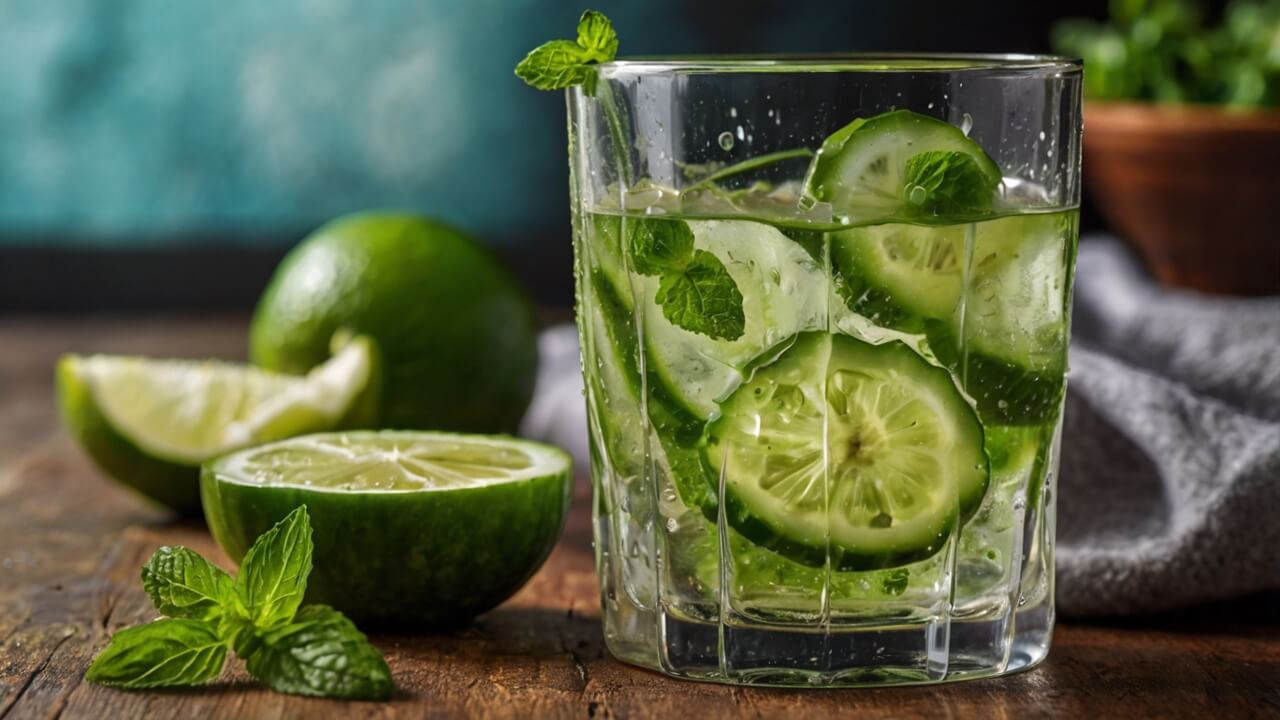
Agua de Sapo holds a deep-rooted cultural significance in Costa Rica, particularly in the Afro-Caribbean region of Limón. This refreshing beverage is more than just a thirst-quencher; it is a celebration of the rich heritage and traditions that have shaped the vibrant tapestry of Costa Rican culture.
For generations, Agua de Sapo has been an integral part of various traditional celebrations and gatherings in Limón. Its presence is a testament to the resilience and ingenuity of the Afro-Caribbean community, who have preserved their culinary traditions despite the challenges they have faced throughout history.
During festive occasions like Independence Day, Christmas, and other local festivals, Agua de Sapo is a staple beverage, served alongside traditional Costa Rican dishes. Its unique blend of flavors, including the distinctive tapa de dulce, ginger, and lime, creates a sensory experience that transports the senses to the lush tropics of the Caribbean coast.
Moreover, Agua de Sapo is a representation of the vibrant Afro-Caribbean heritage that has enriched Costa Rican culture. The beverage’s origins can be traced back to the African diaspora, where similar drinks were crafted to quench thirst and provide refreshment in the tropical climate. Its presence in Costa Rica is a reminder of the diverse cultural influences that have shaped the country’s culinary landscape.
Preparing and sharing Agua de Sapo is not just a culinary act; it is a celebration of community, tradition, and resilience. Each sip is a connection to the past, a tribute to the ancestors who brought their culinary wisdom to the shores of Costa Rica, and a testament to the enduring spirit of the Afro-Caribbean people.
Health Benefits
Agua de Sapo is not only a delightful and refreshing beverage but also offers several potential health benefits due to its nutritious ingredients. Let’s explore the goodness packed into this traditional Costa Rican drink:
Nutritional Value of Key Ingredients:
- Tapa de Dulce (Brown Sugar Cone): A natural sweetener rich in minerals like iron, calcium, and potassium.
- Ginger: Packed with antioxidants and anti-inflammatory properties, ginger can aid digestion and boost immunity.
- Lime Juice: A excellent source of vitamin C, lime juice supports a healthy immune system and promotes collagen production.
- Cinnamon (Optional): This warm spice is known for its anti-inflammatory and blood sugar-regulating properties.
Potential Health Benefits:
- Hydration: With its water base and electrolyte-rich ingredients, Agua de Sapo can help replenish fluids and prevent dehydration, especially in warm climates.
- Digestive Aid: The combination of ginger and lime juice can soothe the digestive system and alleviate issues like nausea and indigestion.
- Immune Support: The vitamin C from lime juice and the antioxidants in ginger work together to boost the immune system and protect against illnesses.
- Anti-Inflammatory Properties: Both ginger and cinnamon (if used) possess anti-inflammatory compounds that can help reduce inflammation in the body.
- Blood Sugar Regulation: The presence of cinnamon may help regulate blood sugar levels, making Agua de Sapo a potential ally for those with diabetes or prediabetes.
Comparison to Other Popular Beverages:
Unlike many commercially available beverages loaded with artificial sweeteners, preservatives, and empty calories, Agua de Sapo is a natural and nutritious alternative. It provides hydration, essential nutrients, and potential health benefits without the added sugars or chemicals found in sodas and some juices.
By incorporating this traditional Costa Rican beverage into your diet, you can enjoy a refreshing and flavorful drink while nourishing your body with valuable nutrients and antioxidants.
Frequently Asked Questions
What is the best way to peel and grate the ginger for Agua de Sapo?
For maximum flavor, it’s best to use fresh ginger root. Peel the ginger with a spoon or vegetable peeler, and then grate it finely using a microplane or box grater. The finer the grate, the more intense the ginger flavor will be in your Agua de Sapo.
Can I use bottled lime juice instead of fresh limes?
While bottled lime juice can work in a pinch, fresh lime juice is highly recommended for the best flavor in Agua de Sapo. The bright, citrusy notes from fresh limes are essential to achieving the authentic taste.
How can I adjust the sweetness level?
The amount of sugar or tapa de dulce used can be adjusted to suit your desired sweetness level. Start with the recommended amount in the recipe, and then add more or less to taste. Keep in mind that tapa de dulce has a deeper, more complex flavor than regular sugar.
Can I use ginger ale or ginger beer instead of fresh ginger?
While ginger ale or ginger beer can provide some ginger flavor, they are not recommended substitutes for fresh ginger in Agua de Sapo. The fresh ginger root imparts a more robust and authentic flavor that is essential to the traditional recipe.
How long does Agua de Sapo last in the fridge?
Properly stored in an airtight container in the refrigerator, Agua de Sapo will typically last for 3-4 days. However, it’s best consumed within the first 2 days for optimal freshness and flavor.
Can I make a larger batch of Agua de Sapo ahead of time?
Yes, you can easily double or triple the recipe to make a larger batch of Agua de Sapo. Just be sure to adjust the ingredient amounts accordingly and use a larger container for mixing and storing. It’s a great way to have a refreshing beverage on hand for parties or gatherings.
Conclusion
Agua de Sapo is a refreshing and vibrant beverage that encapsulates the rich cultural heritage of Costa Rica’s Caribbean coast. With its unique blend of tangy, sweet, and spicy flavors, this traditional drink offers a delightful taste experience that transports you to the lively streets of Limón.
We encourage you to embark on this culinary adventure and recreate the authentic flavors of Agua de Sapo in your own kitchen. Share your experiences with us, whether you followed the recipe to a tee or added your own personal twist. We’d love to hear about the variations you tried and the memories you created while sipping on this delightful concoction.
Furthermore, we invite you to explore the diverse and flavorful world of Costa Rican cuisine by visiting our website and discovering more authentic recipes. Immerse yourself in the vibrant culinary traditions that reflect the country’s melting pot of indigenous, Spanish, and Afro-Caribbean influences.

